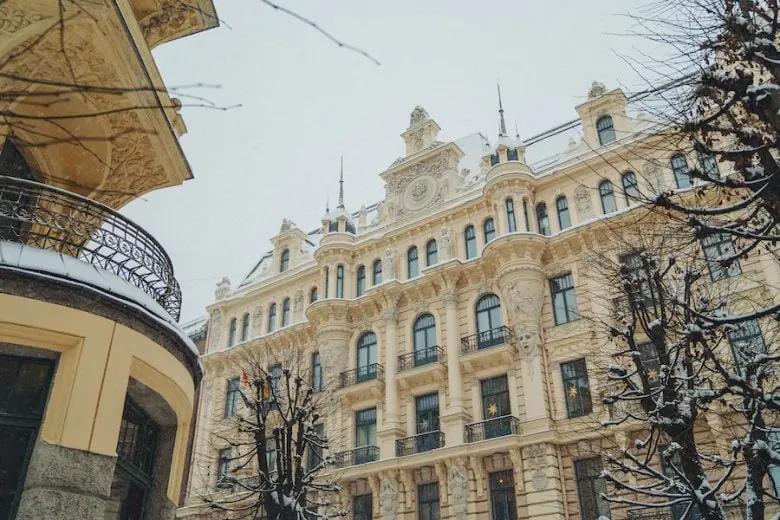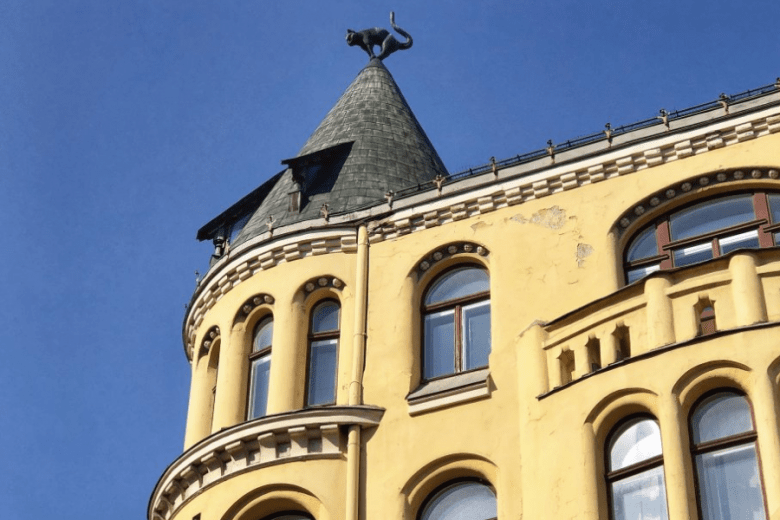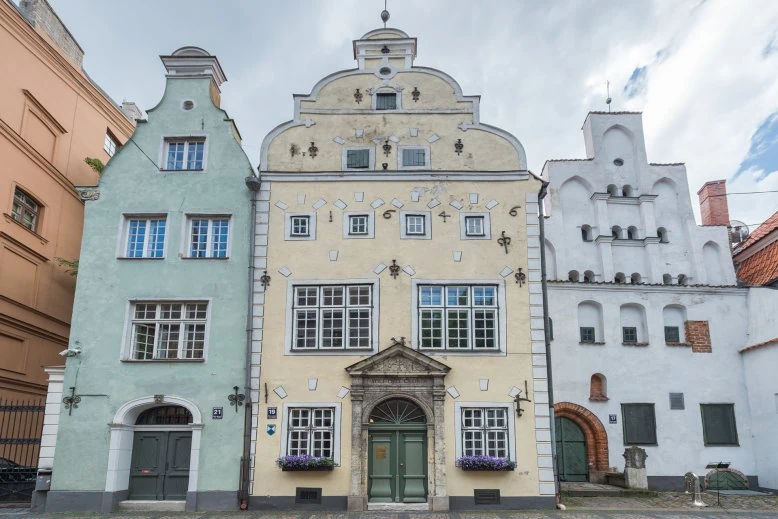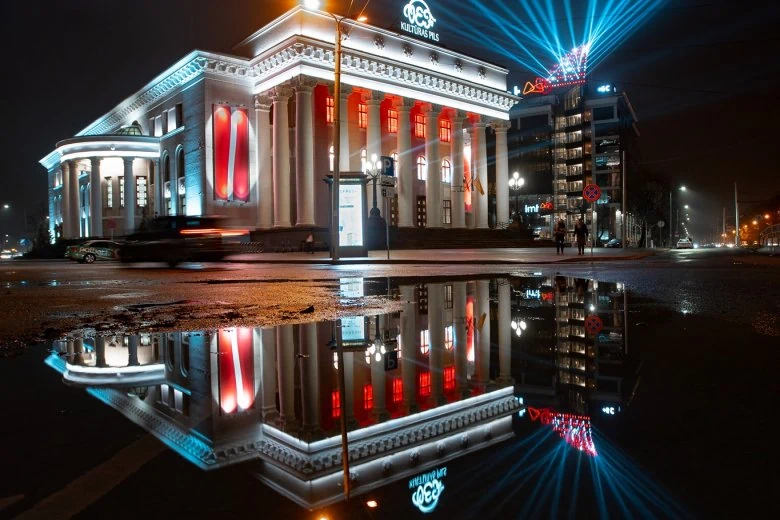Architecture
Architecture is the most accurate witness to the multifaceted face of Riga. Eclectic and amazing in its diversity, where every era and its current has left its mark. From Gothic, Renaissance, Baroque, Classicism to mannered Art Nouveau, modernism and wooden architecture.

Riga Dome Cathedral
The Cathedral is the largest and one of the oldest sacred buildings of the medieval period in the Baltic region, combining Romanesque, early Gothic, Baroque and Art Nouveau features. Today, alongside church services the cathedral hosts concerts by local and internationally renowned musicians.

Alberta Street
Alberta Street is regarded as Riga’s Art Nouveau gem, since it is full of splendid historical Art Nouveau-style buildings from one end to the other. The area was erected in a short period of time – from 1901 to 1908, each of the buildings standing alone as an inimitable 20th century architectural achievement. Eight buildings are now recognised as architectural monuments of national significance.

Ornamental abundance on Strēlnieku Street
One of the most extravagant examples of Art Nouveau in Riga can be found in the ‘Quiet Centre’, 4a Strēlnieku Street, in a building designed by Mikhail Eisenstein.

Art Nouveau at 10b Elizabetes Street
Art Nouveau plays an important role in the historic architecture of Riga; it is mostly concentrated in a neighborhood referred to as the ‘Quiet Centre’, which is a 10-minute walk from the Old Town. It is a gorgeous feature among the historic facades of the city.

House of the Blackheads
The House of the Blackheads is among Riga's top sights, located in the heart of Old Riga, near the Town Hall Square, facing the Riga City Council. The house is very deservedly called grand and royal, and it is a must-see for every city guest.

Riga Castle
Riga Castle has stood on the right bank of the River Daugava for more than 700 years. Through the centuries, it has seen severe destruction, numerous rulers, and wars. Today it houses the residence of the President of Latvia.

Riga Russian Theatre
Mikhail Chekhov Riga Russian Theatre is the oldest Russian professional theatre outside Russia. It was founded in 1883. Located in the heart of old Riga, it enjoys popularity with tourists and is considered one of the sightseeing gems. The Theatre was fully reconstructed in 2010, and today it is one of the best-equipped venues in Eastern Europe. The stage machinery was provided by SBS Buehnentechnic from Dresden, and this collaboration is still active and fruitful.

Latvian National Opera and Ballet
Riga White House - Latvian National Opera and Ballet has been operating on Aspazijas Boulevard since 1923. During the season, which runs from September to the end of May, an average of six new performances are staged, maintaining a balance between the opera and ballet genres. In addition, more than 200 performances and several symphonic and chamber music concerts are shown in one season.

National Library of Latvia
Opposite the Old Town, on the left bank of the Daugava, rises the building of the National Library of Latvia or the Castle of Light. This is one of the most significant cultural buildings in the history of restored Latvia. The library's new building was opened in August 2014, designed by the world-renowned Latvian architect Gunārs Birkerts.

Splendid Palace
Cinema "Splendid Palace" features auteur, art house films, festival favourites from Europe and other world regions.


Kalnciema Quarter
A unique 19th century's complex of wooden buildings is now renovated in Pārdaugava. A group of friends and associates are actively involved in a project of preserving the historic atmosphere of the quarter and adapting it to the dynamics of the 21st century. Buildings invite you to enjoy Latvian and European design, fairs, art exhibitions and workshops at court-yards. The quarter's special feature is old LADA cars to take you into the past.

Cat House
Wrought-copper cats stand on the corner turrets of a building facing the Great Guild on Līvu Square, their backs arched and tails poised as if readying for the final leap. The famous and peculiar building, once scandalous and even been the cause of a lawsuit, was named the Cat House because of these figures. Today, the cats are not only squatting on the roof of the building, but they dwell on the ground floor too.

Three Brothers
The oldest residential complex in Riga has survived from the 15th century. The three houses, which had been cramped together, had long been called the Three Brothers - legend has it that men of the same family built them. The buildings, which are several centuries old, now house the Museum of Architecture and the National Center for the Protection of Cultural Monuments.

Convent Courtyard
The Convent Courtyard is located in the oldest part of the city. Initially, the castle of the Order of the Brothers of the Sword was situated in this place. The castle was built in the 13th century but was destroyed at the end of the same century. The name of the Convent Courtyard comes from the Convent of the Holy Spirit, which settled here in the 14th century.

Swedish Gate
The so-called Swedish Gate is only gate that remains standing today of eight total in Riga's fortification wall.

Small Guild
The Old Town's Small Guild is used for concerts, conferences, presentations, meetings, celebratory gatherings and balls.

Jacob's Barracks
The collection of red-roofed buildings along Torņa Street on one side of Old Town Riga is known as Jacob’s Barracks and is home to a number of bars and restaurants, beauty salons, and travel agencies.

Great Guild
The origin of the Great Guild - one of the oldest public buildings in the Baltics - go back to the first half of the 14th century. It has always been open to cultural and social events.

Grand Stage at Mežaparks
Various cultural and events take place at the Grand Open-Air Stage in the Riga suburb of Mežaparks, but the most important of these events is definitely the Latvian Song and Dance Festival, the tradition of which dates back over 150 years.

The Powder Tower
One of medieval Riga's fortification wall towers, originally called the Sand Tower. Built in 1330.

VEF Culture Palace
VEF Culture Palace is among the most interesting venues in uptown Riga. The building was constructed in 1960 and since then it has served as a venue for various cultural events - international meetings, congresses and art exhibitions, as well as performances of well-known foreign artists and local theatre companies. Various events are presented here also today.

Art Academy of Latvia
The building of the Art Academy of Latvia is one of the most notable architectural and cultural monuments located in the historic centre of Riga.

Riga Latvian Society House
The Riga Latvian Society House is a five-story building (six stories in the courtyard wing) designed in the Neoclassical style - the very first of its kind in Riga.

Culture centre "Ziemeļblāzma"
In a half an hour driving distance from the centre of Riga, in the northern part of the city — Vecmīlgrāvis — there is an architectural monument of national scale — culture palace “Ziemeļblāzma” surrounded by a 5 ha large park.

Mangaļsala jetty
Mangaļsala is the first part of the city that all ships pass when entering the Daugava. Stretching into the sea from Mangaļsala is a breakwater called the Eastern jetty, built in 1850-1861 under the personal supervision of the Czar himself.
